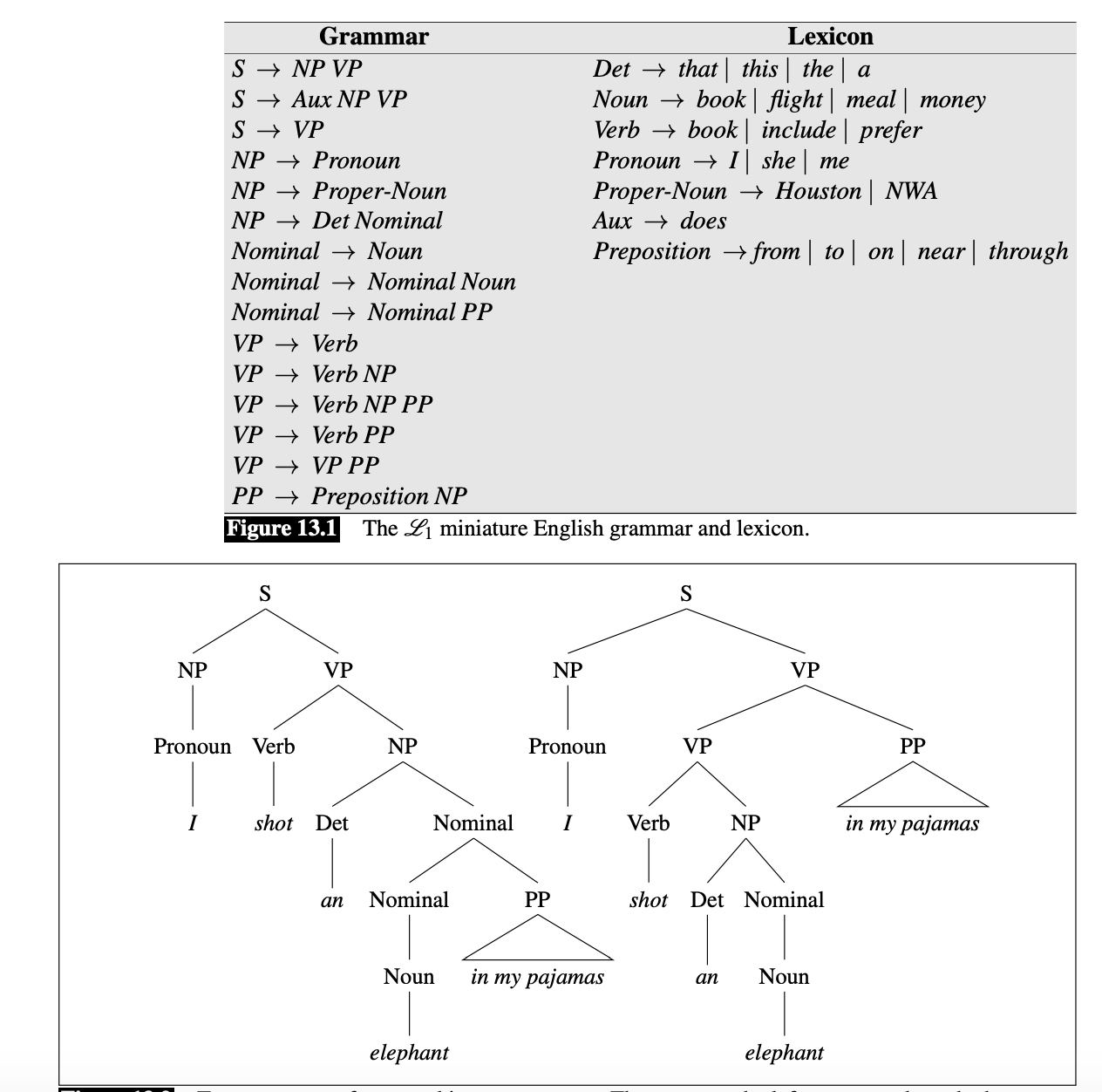Constituency Parsing
Contents
Constituency Parsing#
This tutorial is available as an IPython notebook at Malaya/example/constituency.
This module only trained on standard language structure, so it is not save to use it for local language structure.
[1]:
%%time
import malaya
CPU times: user 2.83 s, sys: 3.71 s, total: 6.54 s
Wall time: 2.13 s
/home/husein/dev/malaya/malaya/tokenizer.py:214: FutureWarning: Possible nested set at position 3397
self.tok = re.compile(r'({})'.format('|'.join(pipeline)))
/home/husein/dev/malaya/malaya/tokenizer.py:214: FutureWarning: Possible nested set at position 3927
self.tok = re.compile(r'({})'.format('|'.join(pipeline)))
what is constituency parsing#
Assign a sentence into its own syntactic structure, defined by certain standardization. For example,
[2]:
from IPython.core.display import Image, display
display(Image('constituency.png', width=500))

Read more at Stanford notes, https://web.stanford.edu/~jurafsky/slp3/13.pdf
The context free grammar totally depends on language, so for Bahasa, we follow https://github.com/aisingapore/seacorenlp-data/tree/main/id/constituency
List available HuggingFace Constituency models#
[2]:
malaya.constituency.available_huggingface
[2]:
{'mesolitica/constituency-parsing-t5-small-standard-bahasa-cased': {'Size (MB)': 247,
'Recall': 81.62,
'Precision': 83.32,
'FScore': 82.46,
'CompleteMatch': 22.4,
'TaggingAccuracy': 94.95},
'mesolitica/constituency-parsing-t5-base-standard-bahasa-cased': {'Size (MB)': 545,
'Recall': 82.23,
'Precision': 82.12,
'FScore': 82.18,
'CompleteMatch': 23.5,
'TaggingAccuracy': 94.69}}
[3]:
malaya.constituency.info
[3]:
'Tested on https://github.com/aisingapore/seacorenlp-data/tree/main/id/constituency test set.'
[4]:
string = 'Dr Mahathir menasihati mereka supaya berhenti berehat dan tidur sebentar sekiranya mengantuk ketika memandu.'
Load HuggingFace model#
def huggingface(
model: str = 'mesolitica/constituency-parsing-t5-small-standard-bahasa-cased',
force_check: bool = True,
**kwargs,
):
"""
Load HuggingFace model to Constituency parsing.
Parameters
----------
model: str, optional (default='mesolitica/constituency-parsing-t5-small-standard-bahasa-cased')
Check available models at `malaya.constituency.available_huggingface`.
force_check: bool, optional (default=True)
Force check model one of malaya model.
Set to False if you have your own huggingface model.
Returns
-------
result: malaya.torch_model.huggingface.Constituency
"""
[11]:
model = malaya.constituency.huggingface('mesolitica/constituency-parsing-t5-small-standard-bahasa-cased')
Parse#
def predict(self, string):
"""
Parse a string into malaya.function.constituency.trees_newline.InternalParseNode.
Parameters
----------
string : str
Returns
-------
result: malaya.function.constituency.trees_newline.InternalParseNode object
"""
[6]:
r = model.predict(string)
You're using a T5TokenizerFast tokenizer. Please note that with a fast tokenizer, using the `__call__` method is faster than using a method to encode the text followed by a call to the `pad` method to get a padded encoding.
Parse into NLTK Tree#
Make sure you already installed nltk, if not, simply,
pip install nltk svgling
[7]:
from nltk.tree import Tree
import svgling
[8]:
tree = Tree.fromstring(r.convert().linearize())
[10]:
svgling.draw_tree(tree)
[10]:
